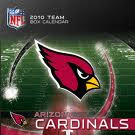 ACORN, Barack Obama, and the Democratic party.
ACORN, Barack Obama, and the Democratic party.
You’ve got only a couple thousand bucks in the bank. Your job pays you dog-food wages. Your credit history has been bent, stapled, and mutilated. You declared bankruptcy in 1989. Don’t despair: You can still buy a house.” So began an April 1995 article in the Chicago Sun-Times that went on to direct prospective home-buyers fitting this profile to a group of far-left “community organizers” called ACORN, for assistance. In retrospect, of course, encouraging customers like this to buy homes seems little short of madness.
Militant ACORN
At the time, however, that 1995 Chicago newspaper article represented something of a triumph for Barack Obama. That same year, as a director at Chicago’s Woods Fund, Obama was successfully pushing for a major expansion of assistance to ACORN, and sending still more money ACORN’s way from his post as board chair of the Chicago Annenberg Challenge. Through both funding and personal-leadership training, Obama supported ACORN. And ACORN, far more than we’ve recognized up to now, had a major role in precipitating the subprime crisis.
I’ve already told the story of Obama’s close ties to ACORN leader Madeline Talbott, who personally led Chicago ACORN’s campaign to intimidate banks into making high-risk loans to low-credit customers. Using provisions of a 1977 law called the Community Reinvestment Act (CRA), Chicago ACORN was able to delay and halt the efforts of banks to merge or expand until they had agreed to lower their credit standards — and to fill ACORN’s coffers to finance “counseling” operations like the one touted in that Sun-Times article. This much we’ve known. Yet these local, CRA-based pressure-campaigns fit into a broader, more disturbing, and still under-appreciated national picture.
Far more than we’ve recognized, ACORN’s local, CRA-enabled pressure tactics served to entangle the financial system as a whole in the subprime mess. ACORN was no side-show.
On the contrary, using CRA and ties to sympathetic congressional Democrats, ACORN succeeded in drawing Fannie Mae and Freddie Mac into the very policies that led to the current disaster.
In one of the first book-length scholarly studies of ACORN, Organizing Urban America, Rutgers University political scientist Heidi Swarts describes this group, so dear to Barack Obama, as “oppositional outlaws.”
Swarts, a strong supporter of ACORN, has no qualms about stating that its members think of themselves as “militants unafraid to confront the powers that be.” “This identity as a uniquely militant organization,” says Swarts, “is reinforced by contentious action.”
ACORN protesters will break into private offices, show up at a banker’s home to intimidate his family, or pour protesters into bank lobbies to scare away customers, all in an effort to force a lowering of credit standards for poor and minority customers. According to Swarts, long-term ACORN organizers “tend to see the organization as a solitary vanguard of principled leftists...the only truly radical community organization.”
ACORN’s Inside Strategy
Yet ACORN’s entirely deserved reputation for militance is balanced by its less-well-known “inside strategy.” ACORN has long employed Washington-based lobbyists who understand very well how the legislative game is played.
ACORN’s national lobbyists may encourage and benefit from the militant tactics of their base, but in the halls of congress they play the game with smooth sophistication.
The untold story of ACORN’s central role in the financial meltdown is about the one-two punch to the banking system administered by this outside/inside strategy.
Critics of the notion that CRA had a major impact on the subprime crisis ask how a law passed in 1977 could have caused a crisis in 2008? The answer has a lot to do with ACORN — and the critical years of 1990-1995.
While the 1977 Community Reinvestment Act did call on banks to increase lending in poor and minority neighborhoods, its exact requirements were vague, and therefore open to a good deal of regulatory interpretation. Banks merger or expansion plans were rarely held up under CRA until the late 1980s, when ACORN perfected its technique of filing CRA complaints in tandem with the sort of intimidation tactics perfected by that original “community organizer” (and Obama idol), Saul Alinsky.
At first, ACORN’s anti-bank actions were relatively few in number. However, under a provision of the 1989 savings and loan bailout pushed by liberal Democratic legislators, like Massachusetts Congressman Joseph P. Kennedy, lenders were required to compile public records of mortgage applicants by race, gender, and income.
Although the statistics produced by these studies were presented in highly misleading ways, groups like ACORN were able to use them to embarrass banks into lowering credit standards. At the same time, a wave of banking mergers in the early 1990's provided an opening for ACORN to use CRA to force lending changes. Any merger could be blocked under CRA, and once ACORN began systematically filing protests over minority lending, a formerly toothless set of regulations began to bite.
CONTINUED 1 2 3 Next >
'














No comments:
Post a Comment